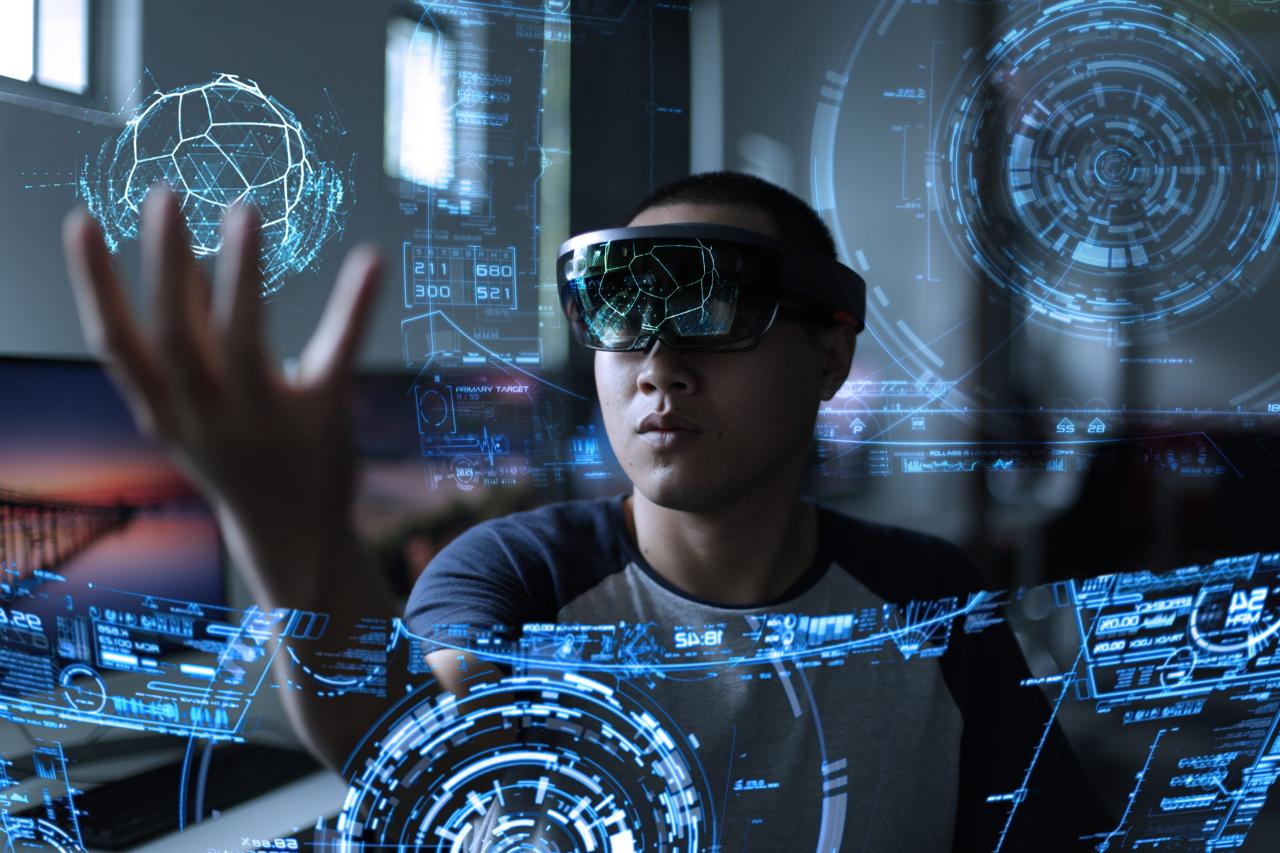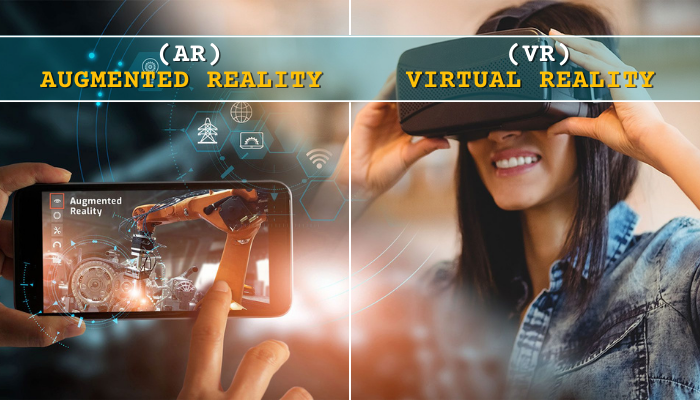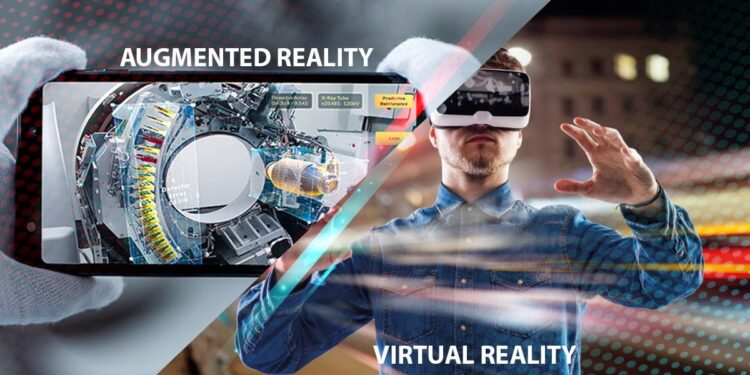Delving into DigiLife Technology Trends in Augmented Reality, this introduction immerses readers in a unique and compelling narrative. It provides an overview of the current landscape of augmented reality in DigiLife technology, highlighting key advancements and innovations that are transforming user experiences in various applications.
Overview of DigiLife Technology Trends in Augmented Reality

Augmented Reality (AR) is revolutionizing the DigiLife sector by blending digital elements into the real world, enhancing user experiences like never before. This technology has seen significant advancements and innovations that are reshaping how we interact with digital content in our daily lives.
Key Advancements and Innovations in Augmented Reality
- Integration of AR in gaming applications, offering immersive experiences and realistic interactions for users.
- Development of AR smart glasses and wearables, providing hands-free access to information and enhancing productivity.
- Utilization of AR in retail and e-commerce for virtual try-on experiences, improving customer engagement and satisfaction.
- Incorporation of AR in educational tools, making learning more interactive and engaging for students of all ages.
Transforming User Experiences in DigiLife Applications
- Enhanced visualization of products before purchase, allowing customers to make informed decisions in online shopping.
- Personalized AR experiences tailored to individual preferences, creating a more immersive and enjoyable user journey.
- Interactive storytelling through AR apps, bringing storytelling to life and engaging users in unique narratives.
- Improved navigation and wayfinding features using AR, making it easier for users to explore new places and discover hidden gems.
Applications of Augmented Reality in DigiLife Technology

Augmented Reality (AR) is revolutionizing various industries within DigiLife by enhancing products, services, and overall user experience. Let's delve into the specific use cases and impact of AR technology across different sectors of the DigiLife industry.
Healthcare Industry
AR technology is being utilized in the healthcare sector to improve medical training, surgical procedures, and patient care. Surgeons can now overlay patient data in real-time during surgeries, leading to more precise and efficient operations. Medical students can also benefit from AR simulations for hands-on learning experiences.
Retail and E-Commerce
In the retail sector, AR is transforming the way customers shop by offering virtual try-on experiences for clothing and accessories. DigiLife companies are implementing AR technology to create interactive product displays and personalized shopping recommendations, enhancing the overall customer shopping experience.
Education and Training
AR is being integrated into educational platforms to provide immersive learning experiences for students. DigiLife technology companies are developing AR applications that allow students to explore historical sites, conduct virtual science experiments, and engage in interactive lessons, making learning more engaging and effective.
Entertainment and Gaming
In the entertainment industry, AR is being used to create interactive experiences in movies, theme parks, and gaming applications. DigiLife companies are leveraging AR technology to blend the virtual world with the real world, offering users a new level of entertainment and engagement.
Manufacturing and Engineering
AR is playing a crucial role in the manufacturing and engineering sectors by improving design processes, assembly line operations, and maintenance procedures. DigiLife technology companies are utilizing AR to provide real-time guidance to workers, reducing errors and enhancing productivity in manufacturing environments.
Challenges and Opportunities in Implementing Augmented Reality in DigiLife
Implementing augmented reality in DigiLife solutions comes with various challenges and opportunities for businesses in the sector. Let's explore the key aspects companies need to consider to successfully integrate augmented reality technologies.
Challenges Faced by Companies
- Lack of Expertise: Many companies struggle with a shortage of skilled professionals who can develop and implement augmented reality solutions effectively.
- High Costs: The initial investment required for integrating augmented reality can be significant, including hardware, software, and training costs.
- Integration Issues: Ensuring seamless integration of augmented reality with existing DigiLife technologies and systems can be complex and time-consuming.
- User Acceptance: Convincing users to adopt augmented reality solutions in their daily lives can be a challenge due to unfamiliarity or resistance to change.
Opportunities for Businesses
- Enhanced User Experience: Augmented reality offers businesses the opportunity to provide immersive and interactive experiences to users, enhancing engagement and satisfaction.
- Increased Efficiency: By leveraging augmented reality in DigiLife solutions, businesses can streamline processes, reduce errors, and improve overall efficiency.
- New Revenue Streams: Implementing augmented reality can open up new revenue streams for businesses through innovative products, services, and advertising opportunities.
- Competitive Advantage: Companies that successfully integrate augmented reality can gain a competitive edge in the market by offering unique and cutting-edge solutions.
Overcoming Implementation Obstacles
- Invest in Training: Companies should invest in training programs to upskill existing employees or hire professionals with expertise in augmented reality development.
- Start Small: Begin with pilot projects or smaller-scale implementations to test the waters before scaling up to larger, more complex solutions.
- User Education: Educating users about the benefits and functionalities of augmented reality can help increase acceptance and usage of the technology.
- Collaborate with Experts: Partnering with experienced augmented reality developers or technology firms can help companies navigate integration challenges and ensure successful implementation.
Future Trends and Innovations in Augmented Reality for DigiLife

Augmented Reality (AR) has already made significant strides in enhancing the DigiLife industry, but the future holds even more exciting developments and innovations. As technology continues to evolve rapidly, here are some predictions and potential trends that could shape the future of AR in DigiLife applications.
Integration of AI and AR
With the advancement of Artificial Intelligence (AI), we can expect to see a seamless integration of AI capabilities with AR technology in DigiLife applications. This fusion could lead to more personalized and interactive experiences for users, revolutionizing how we engage with digital content in our daily lives.
Enhanced Wearable AR Devices
As AR hardware becomes more compact and sophisticated, we can anticipate the rise of enhanced wearable AR devices that seamlessly integrate into our daily routines. These devices could offer hands-free interaction with digital information, making tasks more efficient and immersive in various DigiLife scenarios.
AR in Telecommunications and Remote Collaboration
The future of AR in DigiLife may also see a significant impact on telecommunications and remote collaboration. Imagine using AR to virtually connect with colleagues, attend meetings, or receive real-time guidance from experts regardless of physical location. This trend could transform how we communicate and collaborate in the digital age.
AR in Smart Cities and Urban Planning
In the realm of urban development, AR has the potential to revolutionize smart cities and urban planning initiatives. By overlaying digital information onto physical environments, AR can help city planners visualize and optimize infrastructure projects, improve public services, and enhance the overall quality of life for residents in urban areas.
AR for Personalized Shopping Experiences
The future of AR in DigiLife retail could involve more personalized shopping experiences through virtual try-on capabilities, interactive product showcases, and enhanced customer engagement. AR technology could redefine the way consumers shop online and in-store, creating immersive and customized experiences that cater to individual preferences and needs.
Enhanced AR Content Creation Tools
As AR adoption continues to grow, the demand for enhanced content creation tools is also expected to rise. Innovations in AR software and platforms could empower content creators to develop more engaging and interactive AR experiences for DigiLife applications, driving creativity and innovation in the digital space.
Ultimate Conclusion
In conclusion, the discussion on DigiLife Technology Trends in Augmented Reality sheds light on the challenges, opportunities, and future innovations in this rapidly evolving field. It offers a glimpse into how augmented reality is reshaping the DigiLife sector and influencing the way businesses operate and engage with their audience.












